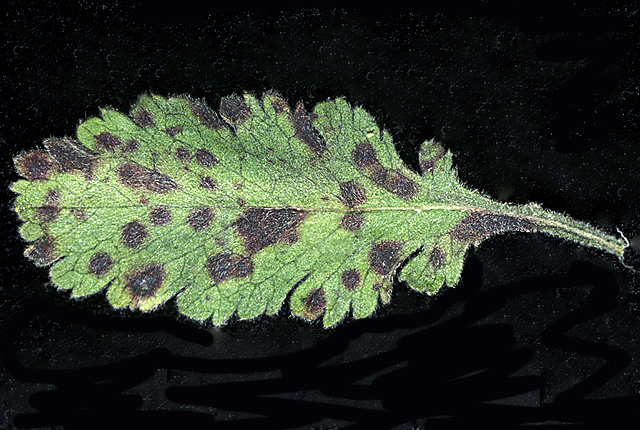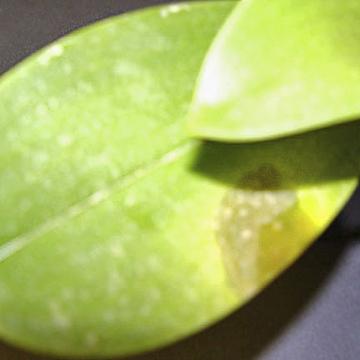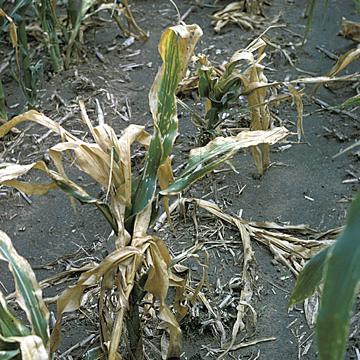DISEASE: Bacterial leaf spot
HOST: Laurel (California laurel)
Leaf with dark brown, angular spots.

Bacterial leaf spot | Laurel (California laurel)
DISEASE: Bacterial leaf spot
HOST: Laurel (California laurel) (Umbellularia californica)
PATHOGEN: Pseudomonas sp.
PATHOGEN SYNONYM: Pseudomonas lauracearum
SOURCE: W. Sinclair
DISEASE: Bacterial leaf spot
HOST: Orchid
Infected leaf of Phalaenopsis orchid with light brown necrotic area.

Bacterial leaf spot | Orchid
DISEASE: Bacterial leaf spot
HOST: Orchid (Phalaenopsis sp.)
PATHOGEN: Pectobacterium cypripedii
PATHOGEN SYNONYM: Erwinia cypripedii
SOURCE: R. McMillan
DISEASE: Bacterial leaf spot
HOST: Peanut
The disease causes water-soaked lesions, particularly on upper leaf surfaces. Lesions enlarge and later display brown necrotic areas. Leaflets become chlorotic and shed prematurely.

Bacterial leaf spot | Peanut
DISEASE: Bacterial leaf spot
HOST: Peanut (Arachis hypogaea)
PATHOGEN: Pseudomonas sp.
SOURCE: P. Subrahmanyam
DISEASE: Bacterial leaf spot
HOST: Verbena
Leaf with purple-brown necrotic spots.

Bacterial leaf spot | Verbena
DISEASE: Bacterial leaf spot
HOST: Verbena (Verbena sp.)
PATHOGEN: Pseudomonas sp.
SOURCE: R. Raabe
DISEASE: Goss's bacterial wilt and blight
HOST: Corn (Maize)
Wilted, dying plants. Leaves have gray to light yellow stripes and irregular margins that follow leaf veins. Systemically infected plants usually have orange vascular bundles.

Goss's bacterial wilt and blight | Corn (Maize)
DISEASE: Goss's bacterial wilt and blight
HOST: Corn (Maize) (Zea mays)
PATHOGEN: Clavibacter michiganensis subsp. nebraskensis
PATHOGEN SYNONYM: Corynebacterium nebraskense
SOURCE: A. Vidaver
DISEASE: Goss's bacterial wilt and blight
HOST: Corn (Maize)
The disease causes necrotic leaf lesions, which typically have dark flecks (freckles) within the lesions (not seen here).

Goss's bacterial wilt and blight | Corn (Maize)
DISEASE: Goss's bacterial wilt and blight
HOST: Corn (Maize) (Zea mays)
PATHOGEN: Clavibacter michiganensis subsp. nebraskensis
PATHOGEN SYNONYM: Corynebacterium nebraskense
SOURCE: A. Vidaver







